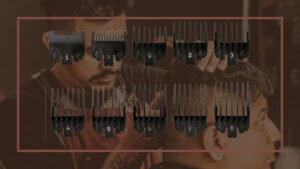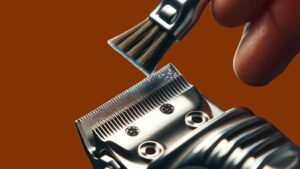
Understanding the Difference: Mature Hairline vs Receding Hairline
During the early stages of hair loss, It’s hard to tell if your hair is maturing or starting to recede due to male pattern baldness.
So, how can I tell the difference?!
The words “maturing” and “hairline” can make any man anxious, thinking about receding hairlines, thinning hair, or, in the worst case – going bald.
Hair loss affects a significant number of American men, with approximately one in five experiencing it in their 20s, one in three in their 30s, and nearly half in their 40s.
Now let’s find out if your hairline is maturing or receding.
Complete Guide: Mature Hairline vs Receding Hairline
What is a Mature Hairline?
As cheese, wine, and emotions get better with time, the same doesn’t apply to our hairline. The hairline is the line of hair follicles on the forehead that shapes the outer edges of our hair. It varies for each person due to genetics, age, hormones, and lifestyle.
During our early teens, we usually have a full head of hair and a ‘juvenile’ or ‘young’ hairline, which is relatively low and straight with rounded corners. However, as we grow between 17 and 30 years old, our hairline matures, moving about one inch higher than before.
This change is entirely normal for most men as they age and doesn’t necessarily indicate male pattern baldness (androgenetic alopecia).
Characteristics Of Mature Hairline
- Hairline moves back evenly, often unnoticed for a long time.
- Hairline typically rises no more than an inch above the highest forehead wrinkle.
- Hairline stays defined, with a possible subtle V-shape (widow’s peak) at the front due to slight receding at the temples.
- No other thinning or loss of hair on the scalp.
#1 Hairline moves back evenly, often unnoticed for a long time.

As it moves back evenly, it may be difficult to see the changes. The best way to see if your hairline is really starting to move is to look at old photos of yourself. If there are visible changes, you probably have a mature hairline. Again, you should check if you are starting to go bald or if your hair is naturally receding from aging. More on this below.
#2 Hairline rises no more than an inch above the highest forehead wrinkle.
The hairline moving up slightly as we age is normal due to changes in hormones and genetics. Hair follicles weaken over time, leading to thinner and shorter hair strands. The hairline usually stays within an inch of the highest wrinkle on the forehead.
#3 Hairline stays defined, with a possible subtle V-shape

As we age, the hair at the temples may recede, creating a V-shaped pattern at the front known as a “widow’s peak.” These changes can be seen as signs of getting older or as unique traits inherited from our genes.
#4 No other thinning or loss of hair on the scalp
A key characteristic of a mature hairline is that it is usually an isolated change, and there is no significant thinning or hair loss occurring in other areas of the scalp. The thinning or recession is confined to the hairline region, and the rest of the scalp remains unaffected.
Is Your Hairline Maturing?

To check if your hairline is maturing, simply look in the mirror for these characteristics:
- Check the shape: A maturing hairline usually moves back in a straight and even line, though it may become slightly uneven with age.
- Observe the pattern: Most maturing hairlines follow a consistent pattern over time. If unsure, consult a medical professional experienced in hair loss and growth.
- Measure the distance: A maturing hairline typically stops receding about 1-1.5 inches (2-3 cm) above the highest forehead wrinkle. If it recedes beyond this point, it may be a receding hairline.
- Look for the shape: A receding hairline often forms an M-shape, while a mature hairline might have a more subtle V-shape, known as a widow’s peak.
Mature Hairline vs Receding Hairline

A maturing hairline is same as a receding hairline by definition, but the key distinction is where the recession ends and certain other factors. Here are some ways to differentiate between a mature hairline vs receding hairline:
- Extra recession at the temples: A receding hairline creates more of an M-shape at the temples, beyond the subtle V-shape of a maturing hairline. This progression is typically categorized as stage III on the Norwood scale.
- Rapid recession: A receding hairline tends to happen much faster than a maturing hairline, making it more noticeable in a shorter period.
- Hairline position: If your hairline is more than an inch above your juvenile hairline, it’s likely that you are experiencing a receding hairline.
- Excessive hair shedding: Receding hairline can lead to more than the normal 50-100 hairs per day loss. You may notice increased hair on your pillow or during hair washing.
- Presence of small, fine hairs beyond the hairline: Having some small hairs in front of the hairline is normal, but an abundance of fine hairs could indicate miniaturisation of hair follicles, which is associated with balding.
Keep an eye out for these indicators to understand if your hairline is receding and not just maturing!
Mature Hairline Vs Balding
1# Thinning Hair at Both Temples
Male pattern baldness can result in thinning hair at both the temples and the crown of the head.
The Norwood Scale illustrates the typical progression of this condition. It starts with a deepening M-shape at the temples, accompanied by a thinning area on the crown of the head. As the two receding areas meet, a U-shaped ring of hair remains at the back and sides of the head.
This pattern is categorized as stages IV and above on the Norwood Scale.
2# Baldness Is Common In Your Family

If baldness is common in your family, especially on either your mother or father’s side, you are at BIG risk of developing male pattern baldness due to its genetic nature.
However, if you notice your hair receding and want to retain or even restore your hair, there are effective hair loss treatments available.
What Does It Mean To Have A Maturing Hairline At Young Age?
Men may notice a maturing hairline beginning after puberty, usually around 18 years old. Though it might be worrying for some, it’s important to know that only about 5% of American men maintain the same hairline they had in their youth by the time they reach their 30s! Therefore, experiencing a maturing hairline at 20 is a natural aspect of aging and not a cause for concern.
However, if signs of recession are causing confidence issues, there are effective ways to address hair loss and prevent it from progressing further.
Coping with a Maturing Hairline
Coming to terms with a maturing hairline and uncertain about its future progression can be emotionally difficult. According to a survey by the International Society of Hair Restoration Surgery, men aged 21 to 40 prioritize having more hair over having more money or friends. So, preserving your hair becomes a top priority!
If your maturing hairline is causing discomfort, a straightforward hairstyle change could make a difference. In case of recession, lifestyle adjustments or hair loss medication might offer the best solutions.
Best Hairstyles for a Maturing Hairline
The Buzz Cut
This style makes thin areas less noticeable. The simplest version is the ‘induction cut,’ inspired by new army recruits’ hairstyles. While you can do it yourself using the lowest clipper grade, it’s recommended to seek a professional’s help.
Medium Length with Brushed Back Hair
Embrace the ‘flow hairstyle’ to complement your maturing hairline. Bradley Cooper and Mathew McConaughey pull off this look effortlessly.
Longer Hair with Messy Bangs or French Crop
Conceal your hairline with a rugged style that draws the eye down. Consider messy bangs or a classic ‘A disconnected undercut with a crop style‘ like Tom Shelby from Peaky Blinders.
Angular Fringe Haircut
Cover a portion of your mature hairline until you become more accustomed to it.
Deep Side Part and Comb to the Side
Try the timeless ‘Ivy League’ haircut, embraced by many men with a maturing hairline, this hairstyle is best known as old money haircut.
Shave Your Head
If your recession is more advanced, consider this option to blend your hairline with your scalp, just like Kriss Turmey.
Lifestyle Factors To Consider
As genetics and hormones influence receding hairlines, lifestyle also plays a role. Pay attention to these areas:
Weight
Extra weight can worsen hair loss in men predisposed to male pattern baldness. Make lifestyle adjustments, reduce beer consumption, and be more active.
Diet
While nutritional deficiencies leading to hair loss are rare in developed countries, consider the importance of protein, zinc, and iron. Vegans and vegetarians should ensure adequate intake of these nutrients.
Exercise
Physical activity and balanced nutrition keep your body healthy, and improved blood flow from exercise may enhance hair growth.
Stress
Chronic and traumatic stress can cause temporary hair loss. Manage stress through activities like yoga and meditation.
Sleep
Aim for 7-9 hours of sleep per night, as sleep deprivation can contribute to stress-related hair loss. Prioritize a healthy lifestyle for better hair health.
Explore Hair Loss Medication
If your maturing hairline is transitioning into a receding one, there’s a solution for you. Laser cap for hair growth will help you retain and regrow your hair. By taking action promptly, there’s a high likelihood of reversing the damage caused by genetics, nature, and time, giving you a chance to regain a fuller head of hair.
Frequently Asked Questions
Although mature hairlines and receding hairlines are influenced by the same hormone, a maturing hairline doesn’t always imply genetic hair loss.
All men naturally produce testosterone and DHT, leading to some shedding along the hairline. However, not all men generate sufficient DHT levels that result in the rapid and significant hair loss associated with a receding hairline. If you notice a gradual hair loss that aligns with your age, there’s no need to worry about pattern balding.
To maintain healthy hair, follow a balanced diet, avoid excessive heat styling, use gentle hair care products, and practice good scalp hygiene. Regular check-ups with a hair specialist can help monitor any changes in your hairline and address concerns timely.
Wearing hats or caps alone does not cause a receding hairline. However, wearing excessively tight headwear for longer periods may put pressure on hair follicles.
Related Articles:
Low Fade vs Mid Fade vs High Fade: Explained
The Difference Between a Bad And Good Fade
Best Laser Cap For Hair Growth


